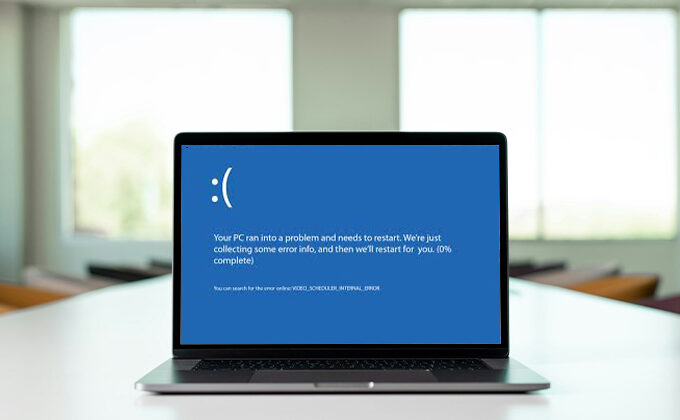In a world driven by data, simply understanding business intelligence (BI) concepts isn’t enough. You need to apply them. Business Intelligence exercises offer an ideal solution. By helping to develop practical knowledge, sharpening skills, solving real business issues, and preparing you for analytics or decision making roles.
In this blog, we’ll explore:
- What Business Intelligence exercises are
- Why they matter
- Types of exercises you can try
- Tools used in BI practice
- Resources to help you grow
- Let’s dig in.
What Are Business Intelligence Exercises?
Business Intelligence exercises are practical activities designed to simulate real-life data challenges and build confidence among professionals and learners in using Business Intelligence tools and using data for strategic decision making. These might include:
- Building dashboards
- Analyzing customer data
- Forecasting revenue
- Tracking KPIs
- Evaluating marketing campaigns
Goal? Train and strengthen your brain to transform raw data into actionable insights.
Just as athletes train before an important game, BI professionals and learners need to stretch out their data muscles regularly.
Also read: What Is Business Process Monitoring and How to Make It Successful
Why Should You Do Business Intelligence Exercises?
Business intelligence exercises are more than just skill builders—they prepare you for the business world. Here’s how:
1. Improve Analytical Thinking
These exercises teach you how to interpret numbers, patterns, and outliers for data-driven decision making, be it marketing, operations, or finance-related.
2. Learn Tools by Doing
Reading up on Power BI, Tableau, or Excel can be beneficial, but using them directly teaches you the ropes for navigation of their interface, building visuals, and writing formulas or scripts.
3. Better Job Preparation
Are you preparing Business Intelligence Analyst, Data Analyst, or Product Manager position? Interviewers tend to favor candidates who demonstrate hands-on experience when interviewing for these roles; engaging in business intelligence exercises helps show your practical expertise and problem-solving ability.
4. Sharpen Data Storytelling
Exercise will enable you to present data in an easy, straightforward format using visuals, dashboards, and summaries that make an impressive first impression.
Popular Business Intelligence Tools
Before delving into exercises, let’s quickly review some tools often employed in Business Intelligence practice:
- Power BI from Microsoft: Power BI provides easy data modeling, visual dashboards, and integration with Excel.
- Tableau: It is the leading tool for data visualization and storytelling. You can try these best Tableau Alternatives
- Excel: Excel is one of the most used data analysis tools today.
- Google Data Studio: Google provides free dashboard creation.
- SQL: SQL is essential for accessing databases and extracting data.
7 Practical Business Intelligence Exercises
Are You Ready to be an expert? Here Are Seven business intelligence exercises to get You Started:
1. Build a Sales Dashboard in Power BI
Objective: Display revenue, top-selling products and regional sales.
- Data Sources: To import sample data or to utilize Excel as the data source.
- Focus: Slicers, bar charts, and KPIs.
- Skills Learned: include data modeling, filters, and visual formatting.
2. Analyze Customer Churn with Excel
Objective: Identify which customers are likely to leave.
- Data Source: CRM export with churn history.
- Focus: Conditional formatting, pivot tables, retention rate.
- Skills Learned: Cohort analysis, lifetime value calculation.
3. Compare Marketing Campaigns in Tableau
Objective: Show ROI of multiple campaigns.
- Data Source: Campaign cost and results.
- Focus: Line graphs, heatmaps, calculated fields.
- Skills Learned: Dashboard interactivity, conversion analysis.
4. Forecast Revenue Trends Using Excel
Objective: Predict sales for the next quarter.
- Data Source: Monthly sales over 3 years.
- Focus: Trendlines, moving averages.
- Skills Learned: Forecasting models, data cleaning.
5. Create a Financial Dashboard
Objective: Track expenses, revenue, and net profit.
- Tools: Power BI or Google Data Studio.
- Focus: Card visuals, profit margin visuals.
- Skills Learned: Aggregation, drill-through analysis.
6. Segment Customers Using SQL
- Objective: Classify customers based on purchase frequency.
- Focus: COUNT, GROUP BY, HAVING.
- Skills Learned: Writing and optimizing SQL queries.
7. Design an Executive KPI Scorecard
Objective: Create a top-level overview for the C-suite.
- Metrics: Revenue, churn rate, NPS, user growth.
- Tools: Tableau or Power BI.
- Skills Learned: Simplifying complex data, high-impact visuals.
Also read: What is a Master Schedule? Key Benefits, Common Challenges, and How to Use It
Best Resources for Business Intelligence Practice
1. Kaggle Datasets
Thousands of free datasets to download and practice with.
2. Tableau Public
Browse public dashboards, download them, and reverse engineer the logic.
3. Microsoft Learn
Offers structured modules on Power BI and Excel-based BI.
4. LinkedIn Learning & Coursera
Courses with real-world projects, quizzes, and certifications.
5. GitHub Repositories
Explore open-source dashboards, SQL scripts, and Python notebooks.
Career Benefits of BI Practice
If you regularly do BI exercises, you’ll find yourself:
- More confident in meetings
- Better at identifying trends and anomalies
- Capable of handling data-heavy interviews
- Ready to build custom dashboards for clients or employers
Even if your job does not directly involve business intelligence (BI), data literacy has rapidly become a fundamental skill among professionals of all backgrounds.
Tips to Get the Most from BI Exercises
- Launch With Familiar Data: Use sales reports or CRM exports from your company for starting points.
- Keep It Simple: Don’t try and tackle everything all at once; focus on one metric at a time.
- Explain Your Work: Create a presentation or video summarizing your findings and insights.
- Track Your Progress: Create and keep a portfolio or GitHub repo with all of your projects to track their development.
- Ask for Feedback: Share your dashboards with colleagues and mentors for feedback on them.
Final Thoughts
Business Intelligence can benefit all departments, not only analysts. From HR departments and marketers to sales teams and product developers. Learning to collect and interpret data will transform decision-making processes.
Begin crafting today! Select from this list, open up the tool of your choice, and begin building! Regular practice of these business intelligence exercises will improve data confidence while leading to smarter professionals with enhanced insights.















Leave a comment